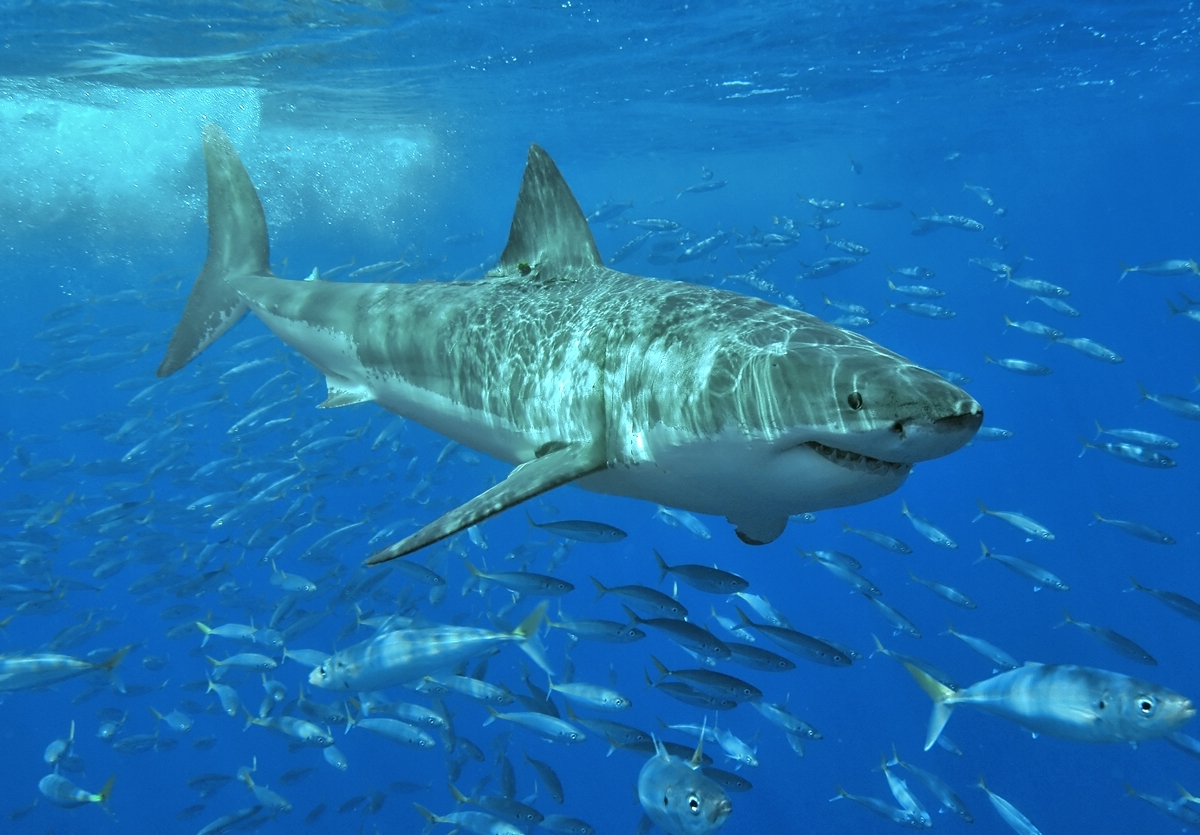
Great White Sharks are among the most fascinating creatures in the ocean. Known for their size, power, and mystery, these apex predators captivate the imagination of many. But what makes them so intriguing? Great White Sharks can grow up to 20 feet long and weigh over 5,000 pounds. They have an incredible sense of smell, capable of detecting a single drop of blood in 25 gallons of water. Their teeth, which can number up to 300, are designed to tear through flesh with ease. Despite their fearsome reputation, they play a crucial role in maintaining the balance of marine ecosystems. Ready to dive into more amazing facts? Let's get started!
Key Takeaways:
- Great white sharks are powerful predators with unique adaptations, but they face threats from overfishing and habitat loss. Conservation efforts are crucial to protect these fascinating creatures.
- Great white sharks have incredible sensory abilities and complex behaviors. Despite their fearsome reputation, they play a vital role in the ocean ecosystem and are worthy of conservation efforts.
Great White Shark Basics
Great white sharks are among the most fascinating creatures in the ocean. Known for their size and power, these sharks have captivated humans for centuries. Let's dive into some intriguing facts about these apex predators.
- Great white sharks can grow up to 20 feet long and weigh over 5,000 pounds.
- They have a lifespan of around 70 years, making them one of the longest-living shark species.
- These sharks are found in coastal waters all over the world, from Australia to California.
- Great whites have a unique torpedo-shaped body that helps them swim at speeds up to 35 mph.
- Their skin is covered in tiny, tooth-like structures called dermal denticles, which reduce drag and increase speed.
Hunting and Diet
Great white sharks are known for their hunting prowess. They have several adaptations that make them efficient predators.
- They primarily feed on marine mammals like seals, sea lions, and dolphins.
- Great whites use a technique called "breaching" to catch fast-moving prey, where they launch themselves out of the water.
- They have an incredible sense of smell, capable of detecting a single drop of blood in 25 gallons of water.
- Their eyes are adapted to low light conditions, allowing them to hunt effectively at dawn and dusk.
- Great whites can go for weeks without eating after a large meal, thanks to their slow metabolism.
Reproduction and Lifespan
Understanding the reproductive habits of great white sharks can be challenging due to their elusive nature. However, researchers have uncovered some fascinating details.
- Female great whites give birth to live young, known as pups, after a gestation period of about 11 months.
- A typical litter consists of 2 to 10 pups, each measuring around 4 to 5 feet at birth.
- Pups are born fully developed and are immediately independent, receiving no parental care.
- Great white sharks reach sexual maturity at around 15 years of age.
- They have a slow reproductive rate, which makes them vulnerable to population decline.
Sensory Abilities
Great white sharks possess some of the most advanced sensory systems in the animal kingdom, aiding their survival and hunting efficiency.
- They have electroreceptors called ampullae of Lorenzini, which detect the electrical fields produced by other animals.
- Their lateral line system senses vibrations and movements in the water, helping them locate prey.
- Great whites have excellent vision, with eyes adapted to see both in and out of water.
- They can detect the Earth's magnetic field, which they use for navigation during long migrations.
- Their sense of hearing is acute, capable of picking up low-frequency sounds from miles away.
Behavior and Social Structure
Great white sharks exhibit complex behaviors and social structures that are still being studied by scientists.
- They are generally solitary animals but can be seen in groups during feeding frenzies.
- Great whites establish dominance hierarchies, with larger individuals often asserting control over smaller ones.
- They communicate through body language, such as arching their backs or lowering their pectoral fins.
- These sharks are known to migrate long distances, sometimes traveling thousands of miles between feeding grounds.
- Great whites display curiosity towards humans and boats, often approaching to investigate.
Conservation and Threats
Despite their fearsome reputation, great white sharks face numerous threats that endanger their populations.
- They are listed as vulnerable by the International Union for Conservation of Nature (IUCN).
- Overfishing and bycatch in commercial fisheries pose significant risks to their numbers.
- Habitat loss and pollution also impact their survival, particularly in coastal areas.
- Great whites are sometimes hunted for their fins, teeth, and jaws, which are sold as souvenirs.
- Conservation efforts include protected areas, fishing regulations, and public awareness campaigns.
Unique Adaptations
Great white sharks have evolved several unique adaptations that make them formidable predators.
- Their jaws can exert a bite force of up to 4,000 psi, one of the strongest in the animal kingdom.
- They have a countershading coloration, with a dark dorsal side and a lighter ventral side, providing camouflage.
- Great whites can regulate their body temperature, allowing them to hunt in colder waters.
- They possess a spiral valve in their intestines, which increases nutrient absorption from their food.
- Their teeth are serrated and constantly replaced throughout their lives, ensuring they always have sharp tools for hunting.
Interaction with Humans
Great white sharks have a complex relationship with humans, often misunderstood due to their portrayal in media.
- They are responsible for the most unprovoked shark attacks on humans, but such incidents are rare.
- Many attacks are cases of mistaken identity, where sharks confuse surfers or swimmers for seals.
- Shark cage diving has become a popular activity, allowing people to observe great whites up close.
- Researchers use tagging and tracking to study their movements and behavior, contributing to conservation efforts.
- Public perception of great whites is slowly changing, with increased awareness of their ecological importance.
Fun and Lesser-Known Facts
Beyond their fearsome reputation, great white sharks have some fun and lesser-known facts that might surprise you.
- They can leap out of the water, a behavior known as breaching, which is often seen in South Africa's False Bay.
- Great whites have been observed playing with kelp and other objects, suggesting they engage in recreational activities.
- They have a unique way of sleeping, where they keep swimming to ensure water flows over their gills for oxygen.
- Great whites can live in both warm and cold waters, thanks to their ability to regulate body temperature.
- They have been around for millions of years, with ancestors dating back to the time of the dinosaurs.
The Final Bite
Great white sharks are fascinating creatures. These apex predators have been around for millions of years, and their unique adaptations make them masters of the ocean. From their incredible sense of smell to their powerful bite, great whites are built for survival. They play a crucial role in maintaining the balance of marine ecosystems by keeping prey populations in check.
Despite their fearsome reputation, great white sharks are not mindless killers. They are curious and intelligent animals that often investigate their surroundings before deciding to attack. Understanding these magnificent creatures can help dispel myths and promote conservation efforts.
Protecting great white sharks is essential for the health of our oceans. By learning more about them, we can appreciate their importance and work towards ensuring their survival for future generations. So next time you think of great white sharks, remember they're more than just teeth and terror—they're vital to our planet's marine life.
Frequently Asked Questions
Was this page helpful?
Our commitment to delivering trustworthy and engaging content is at the heart of what we do. Each fact on our site is contributed by real users like you, bringing a wealth of diverse insights and information. To ensure the highest standards of accuracy and reliability, our dedicated editors meticulously review each submission. This process guarantees that the facts we share are not only fascinating but also credible. Trust in our commitment to quality and authenticity as you explore and learn with us.


